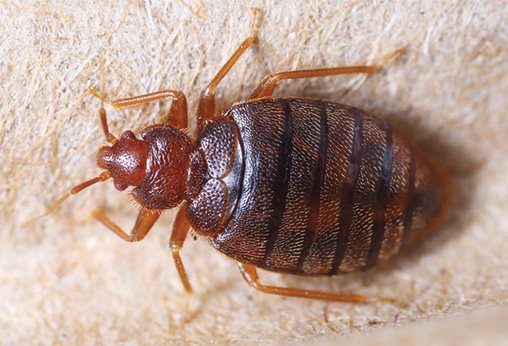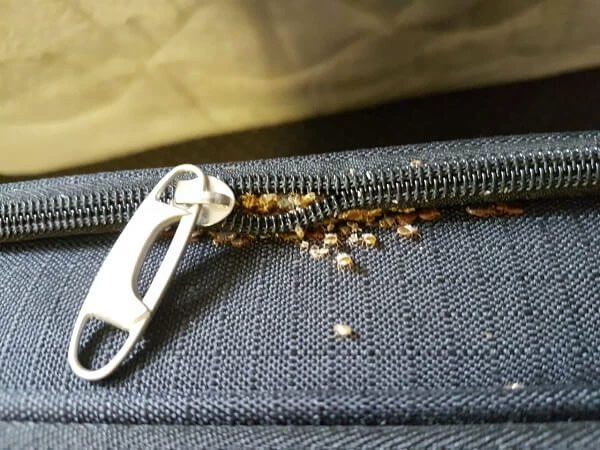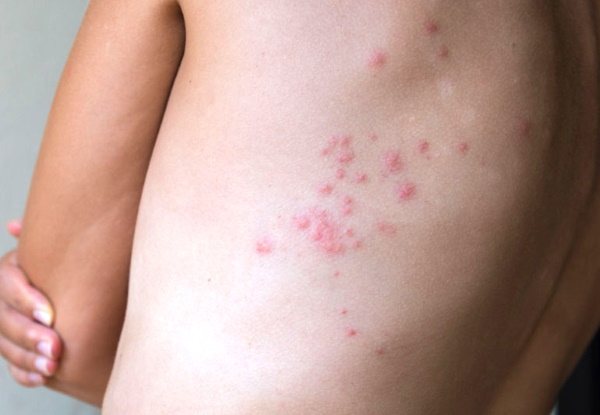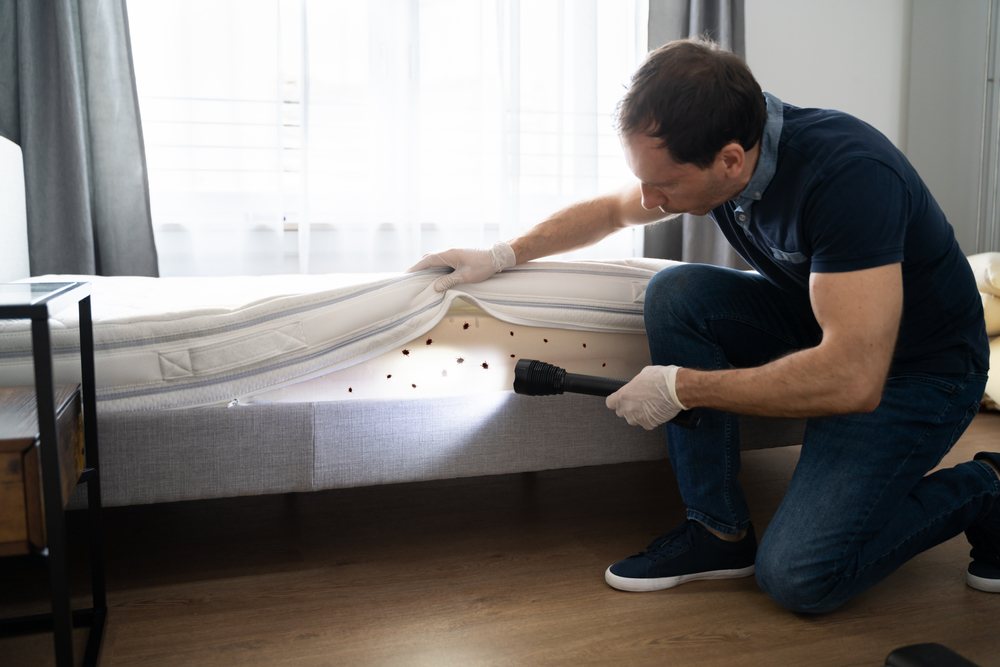People are familiar with the phrase “Sleep tight, don’t let the bed bugs bite.”
But not too many are familiar with the bugs that inspired such a quirky rhyme to begin with.
Why is that?
Bed bug infestations were a distant thought in the mid 20th century. These pests had been largely wiped out by the 1950s due to the introduction of modern insecticides.
With increasing amounts of pesticide regulation and the advent of international travel, bed bugs have come back with a vengeance.
Infestations have become a global epidemic, and these insects developed an infamous reputation for their ability to survive.
But what, exactly, are bed bugs?
Let’s dive into the biology of a bed bug, the behaviors of the species, and why they have become such a meddlesome pest in recent decades.
Page Contents:
Bed Bug Overview
Bed bugs are tiny insects that feed off the blood of humans and animals. They are largely nocturnal, and prefer to feed on people while they’re asleep.
They are between 1 mm to 7 mm in length, and have ovular bodies. Bed bugs are reddish-brown in color, though they may appear bright red after a feeding.
Because of the way their bodies are built, bed bugs are rather slow. They can crawl at speeds of 3 to 4 feet per minute and are incapable of jumping.
They also lack wings, and cannot burrow or swim.

Bed bugs are highly resilient and adaptable. They are found on every continent except for Antarctica, and can thrive in any environment.
There are 2 reasons why they haven’t settled in Antarctica.
- Lack of access to food (humans).
- Bed bugs cannot withstand cold weather for too long.
Contrary to popular belief, bed bugs do not thrive in only “dirty” environments.
These creatures have been known to infest the cleanest of homes and the most upscale hotels.
As long as there is food and stable environmental conditions… bed bugs will thrive.
Bed Bug Symptoms
The symptoms of a bed bug infestation go beyond the skin irritation that comes with being bitten.
Dealing with bed bugs can have detrimental effects on mental health as well.
Bed bug bites are commonly found on the upper torso, including the face, neck and arms. They look like red-colored welts and are found in clusters. Bites are usually very itchy, a result of the immune system fighting bacteria left by the insect’s saliva.

On average, symptoms will appear within a few days of being bitten, though this depends on the sensitivity of your skin. In general, symptoms are eligible to surface as early as a few hours to a few weeks after the incident.
Scratching your bites is NOT recommended, as that could potentially break the skin and cause infection.
You should observe your bites closely to determine the best course of action. The first step is to confirm whether or not your insect bites are from actual bed bugs vs. bites from similar insects.
In regards to mental and emotional health, bed bug infestations can be a major source of anxiety. Nobody wants to deal with the fact that their home is infested, and removing bed bugs can seem daunting without professional help.
Insomnia is another symptom of bed bug activity and can contribute to the aforementioned anxiety.
Since bed bugs are nocturnal, they’ll only come out to feed if you’re asleep.
And if you know that bed bugs are hiding in your bedroom, waiting to drink your blood, then how do you expect to fall asleep?
Symptoms of insomnia can include a loss of productivity, difficulty paying attention to a task, and irritability.
Otherwise known as a total disruption to your daily life.
Bed Bug Causes
As mentioned earlier, bed bugs don’t necessarily need an environment to be dirty for them to take up residence. 5-star hotels have been known to suffer with bed bug infestations from time to time.
So what, exactly, attracts bed bugs?
There are 2 motivating factors that attract these pests, and they are pretty simple: a consistent supply of food, and space for them to hide during the day.
Bed bugs do best in areas with a revolving door of foot traffic. Thus, they are commonly found in the following places:
- Hotels
- Airports
- Public transportation (train stations, buses, etc.)

Bed bugs spread from place to place by hiding in luggage or other personal belongings. If you stayed in an infested hotel and the pests snuck into your suitcase, then you might have unwittingly brought them home with you.
Bed Bug Prevention
Bed bugs are notoriously difficult to remove. A part of the stress that comes from dealing with an infestation is trying to figure out how to get them out of your home.
Professional treatments are the best way to kill off these vermin, but there’s still a chance that some bed bugs could survive extermination attempts.
If you’re hesitant to pay a hefty price for bed bug removal, here are some basic tricks you can use to try and purge bed bugs yourself.
- Routine cleaning: While bed bugs don’t require a home to be dirty or cluttered in order to survive, it does give them an advantage. Reducing clutter in your house can eliminate potential hiding places, and vacuuming can take care of any stragglers.
- Protective bed coverings: Since bed bugs tend to nest in and around beds, you can cover your bedding with specialized mattress covers. These covers go around the entire mattress and prevent bed bugs from climbing into your bed… or getting out from it.
- Heat treatments: Bed bugs can’t stand intense heat. While professional pest control agencies use heaters designed exclusively for bed bug removal, you can achieve similar results by investing in a portable heater. Placing infested items in a dryer on high heat also works.
Signs of an Infestation
What makes bed bug infestations so troublesome is how difficult they can be to identify. Since bed bugs are incredibly small and tend to hide in remote places, you’d be hard-pressed to identify them on sight alone.
Instead…
You’ll have to rely on physical clues that these pests leave behind.
Here’s what to keep an eye out for:
- Bite marks: One of the more obvious signs that bed bugs are in your home is the presence of bites. They look like clusters of red-colored welts and most frequently appear on the upper torso.
- Shed exoskeletons: As bed bugs mature, they shed their exoskeleton over the course of their development. Exoskeletons take the shape of a bed bug, but it’s transparent in color (and it obviously can’t move). Hatched eggshells are similar in appearance, looking like opaque pearls.
- Stains on bedding/clothing: Since bed bugs are nocturnal feeders, you’re likely to discover their droppings. Bed bug excrement looks like little black dots that will form a linear pattern.
Where Bed Bugs Hide
Like any pest, bed bugs don’t like living out in the open. They are at their most vulnerable in places where they can easily be spotted.
So, where do bed bugs find themselves at home the most?
In damp or dark places where they can’t be seen during the day.
Bed bugs are, at minimum, only 1mm in length. Thus, they can squeeze into just about any nook and cranny that will accommodate them.
The infographic below lists some places where bed bugs like to hide:
While bed bugs can nest anywhere, there is 1 factor that is required for their habitat.
A reliable source of food.
Bed bugs can only move 3 to 4 feet per minute. To avoid exhausting themselves, bed bugs commonly make their nests close to their food source–the bedroom, in most cases.
Where Bed Bugs Bite
Bed bugs will feed on any exposed skin they come across. Typically, this means they will commonly bite areas along the upper torso, such as the head, neck and arms.
Bed bugs CANNOT bite through clothing. This is why bites on the lower body–the legs and feet–are less common, though these bugs will target the legs if they’re exposed.
When bed bugs bite into the skin, they release 2 unique compounds: an anticoagulant to prevent the blood from clotting, and an anesthetic to prevent immediate itchiness.

Once the anesthetic wears off several hours later, you’ll begin to see (and possibly feel) the bite marks emerge.
Bed bugs also won’t bite anywhere covered in hair since hair follicles are too thick for them to bite through.
In a study conducted by Sheffield University, people who are covered in more body hair are less likely to be bitten by bed bugs. Conversely, people with less hair are more likely to be bitten.
This is also why bed bugs avoid feeding on household pets. Animal fur prevents them from breaking through the skin, making feeding next to impossible.
Key Facts and Statistics
Below are some interesting facts about bed bugs.
1. While bed bugs can be found in all 50 states, they are more common in some areas than others. Studies show that they are most commonly found in the South and Midwest, with each region reporting 20% of total bed bug infestations in the US.
2. Bed bugs are the least apparent in the Northeast, with only 17% of infestations coming from this region.
3. Every year in the United States, 1 in every 5 people either directly suffers from a bed bug infestation or knows someone who has dealt with bed bugs.
4. Bed bugs can last for long periods of time without feeding. They have been known to survive upwards of a full year between meals.
5. When exposed to severe cold, bed bugs enter a state called diapause. Diapause is similar to hibernation in that the bed bug goes dormant, but with one major difference…During diapause, bed bugs stop growing entirely. Unlike other animals, who simply enter a prolonged state of sleep in the winter months, a bed bug’s life cycle is completely stopped during diapause. So, if a bed bug is in the larval stage when it enters diapause, it will remain a larva long after it should have developed into an adult.
6. Bed bugs are incapable of spreading disease (like COVID-19). This misconception likely stems from the fact that other biting insects are capable of spreading illnesses.(Such as ticks with Lyme disease, or mosquitoes with malaria.)However, bed bug bites can pose health risks. Itching a bed bug bite can lead to opening the wound and causing an infection: individuals who are more sensitive to insect bites could develop severe allergic reactions.
If you are bitten by a bed bug and begin exhibiting serious symptoms, please seek medical attention immediately.





